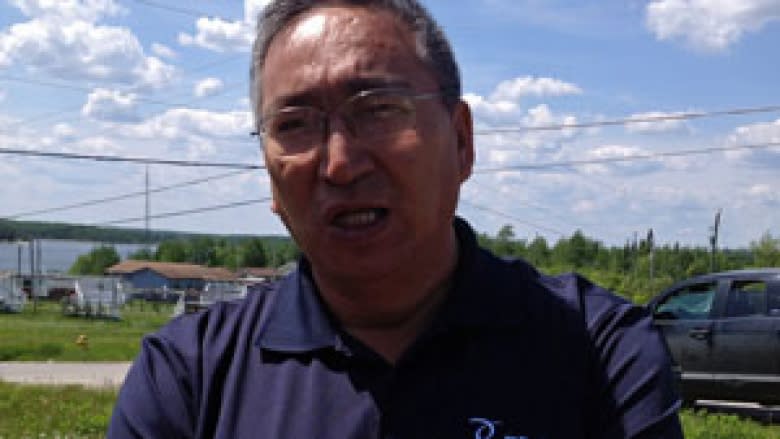NDP questions Ontario Liberal's commitment to Grassy Narrows mercury cleanup
A new report suggesting an on-going source of mercury contamination on the site of the pulp and paper mill in Dryden, Ont., has provincial politicians pointing fingers.
The government-funded report, released on Tuesday, suggests that an old chemical plant on the current mill property is still leaking mercury and contaminating the Wabigoon-English River system upstream from the Grassy Narrows and Wabaseemoong First Nations.
Previous dumping of mercury by the former mill owners in the 1960s and 70s was long believed to be the cause of the mercury poisoning among the people in both First Nations, but a study released last year pointed to on-going contamination. Tuesday's report adds weight to that theory.
"This government has said repeatedly that the mill site is not an ongoing source of mercury, why has the government never bothered to test the river next to the Dryden mill," NDP Indigenous Affairs critic Michael Mantha asked at Queen's Park on Wednesday.
The Minister of Environment and Climate Change, Glen Murray, said the hidden source of contamination has been difficult to locate and Domtar, the current mill owner, has been required to monitor the site.
Murray said the Liberals should not shoulder the blame for allowing the poisoning continue for decades after the initial mercury contamination was discovered in the 1960s.
"All of us were in power during those periods of time and not one party prior to this government [currently] in power took action on that," Murray said. "So maybe we can all have a little humility."
The Liberals committed last month to fully investigate the hidden source of contamination, stop it and clean up the mercury from the 1960s and 70s that remains in the river.
But Mantha said the government is not being transparent about the details of the cleanup, from costing to timelines.
"Will the premier tell this legislature and the people of this province exactly what promises the premier made to Chief Fobister in a meeting held with him on February 10," Mantha asked.
It's also not clear what the federal government's role will be.
Last month, Prime Minister Justin Trudeau said Canada would "continue working closely with the province of Ontario and the First Nations to get to the bottom of the science, and the next steps necessary to deal with this issue once and for all."
Then on Wednesday, Trudeau said the cleanup is a provincial responsibility.
"The Grassy Narrows issue is very much a provincial issue," Trudeau said during a news conference in Calgary. "The federal government under my leadership is certainly very engaged with the province to ensure that we're moving forward in the right direction."
So far the province has provided $80,000 of $350,000 promised to Grassy Narrows First Nation for environmental field work and is attempting to accelerate the investigative work, according to the ministry.
"This work will inform the extent of any mercury contamination in the river and determine which remediation options may be the most appropriate for each site, including enhanced natural recovery and capping," a ministry spokesperson said in an email to CBC News. "Grassy Narrows First Nation's expert team is currently developing a detailed study plan and timeline for this work."
The new report "solidifies our belief that the mercury is still there and verifies our fears that mercury is still poisoning our people," Grassy Narrows Chief Simon Fobister said.
"This mercury is not going to go away any time soon unless there's a massive cleanup," he added.




